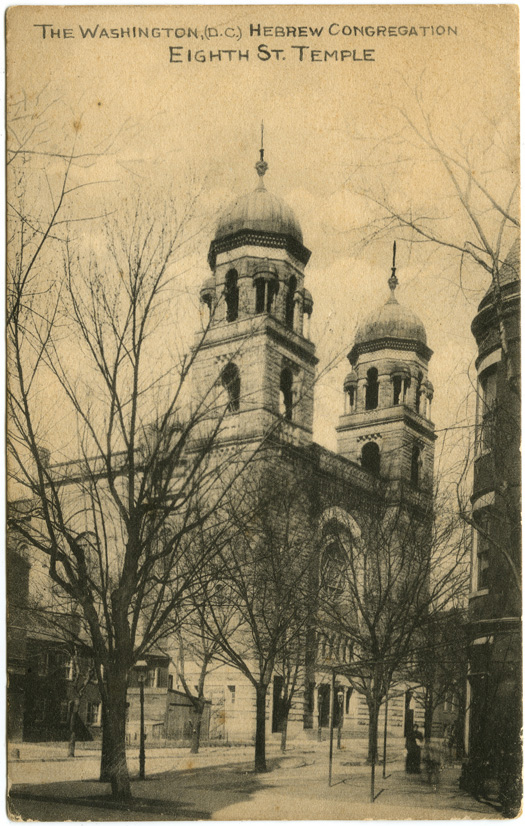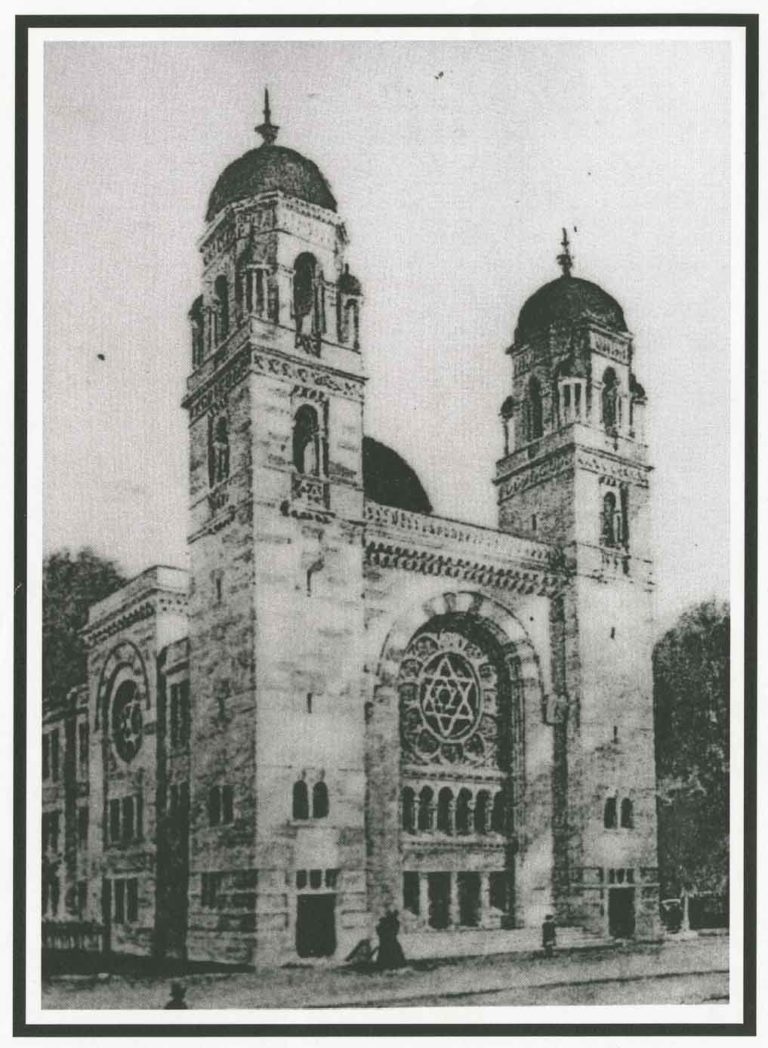5.5 Washington, D.C.
Washington Hebrew Congregation/8th Street Temple, 8th and I streets
Louis F. Stutz and Frank W. Pease, architects, 1898
W. B. Garrison, Inc., Washington D.C., publisher; no publication date, but September 10, 1920, is written on the back
This card pictures the second home of Washington Hebrew, the oldest Jewish congregation in the nation’s capital. The congregation first occupied a former church building, but by 1897 began to build the new temple on the same site at 816 8th Street NW. The cornerstone was laid on September 16, 1897, by President William McKinley. (President Ulysses S. Grant had attended the dedication of nearby Adas Israel in 1876.)
The building committee had visited temples in others cites and held a competition, eventually hiring the architectural firm of Stutz and Pease, which guaranteed that the cost would not exceed $55,000. The design was influenced by the synagogues recently built in neighboring Baltimore, though the cost of Washington Hebrew was much less. It had impressive twin towers—a feature popular for American synagogues since the 1860s—and the capacity to seat 1,400 people.
The synagogue is essentially medieval in style. The facade rises high, two tall towers at each end terminating in octagonal pavilions with onion-shaped domes. In the central bay a tripartite entrance is surmounted by an arcade of narrow arches. Above this, a tall arch frames a large, round rose window inscribed with the Star of David. A low Byzantine-style dome pierced with bull’s-eye windows sits over the sanctuary. This dome and the smaller ones on the towers also are topped with the Stars of David, an increasingly popular Jewish symbol—used here as an obvious counterpoint to the Christian cross, so familiar on church spires, domes, and gables. Because the temple rises from a sidewalk edge, and because the main visible part is sheathed in heavy rusticated stone, the building appears massive and strong.
Inside, the space is a single large hall, articulated with classical details. Upper galleries have narrow supports. A central aisle runs between double ranks of pews, each pew with space for four to six worshipers. Large windows and artificial light brighten the hall.
This structure was among the last Reform temples to be built in a medieval style. Within a few years, the Reform Movement would favor classical-style buildings. The 8th Street Temple was sold to New Hope Baptist Church (later, the Greater New Hope Baptist Church) in March 1954. The next year Washington Hebrew Congregation dedicated its new home on Macomb Street NW, where the cornerstone had been laid by President Harry Truman in 1952. The 1890s building, still a church in 2021, remains a landmark of downtown Washington.

